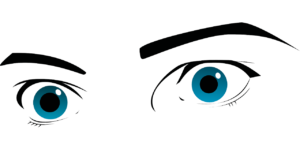Eyes In The Back of Your Head [Show Notes]

Occipital Lobe Basics
The occipital lobe sits in the back of your head, it directly connects to your eyes.
2 Streams of messages that your eyes send to your occipital lobe.
- Ventral stream – translates “what”
- Dorsal stream – translates “where” and “how”
It sends translated information to the necessary part of the brain to respond or react to what you saw. This is how hand-eye coordination works (not just for athletes). And, since so much of the information we receive is visual means that the occipital lobe doesn’t do much else.
**The following is complete speculation based on my experiences as a Mom.**
Mom’s get accused of having eyes in the back of their head – but my guess is that mom’s gain a keener sense of spacial awareness regarding the things that are happening around you. Also, mom’s hearing become much more attuned to specific sounds (aka knowing their baby’s voice from other baby voices) to the point of knowing the difference between the sound of crayons coloring on paper versus crayons coloring on a wall!
If it hasn’t been obvious, let me just say that no part of the brain acts and reacts all by itself. Many of the complex activities we complete as humans involve many areas of the brain simultaneously or sequentially.
Connect with me
Support us on Patreon
*NEW* Join the Pharmacist Answers Podcast Community on Facebook
Subscribe: iTunes, Stitcher, GooglePlay, TuneIn Radio
Music Credits: “Radio Martini” Kevin MacLeod (incompetech.com) Licensed under Creative Commons: By Attribution 3.0 http://creativecommons.org/licenses/by/3.0/
